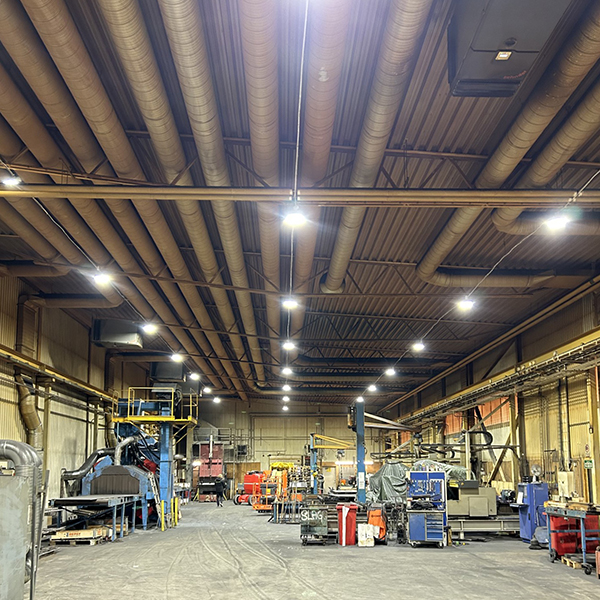Maximizing Productivity with Advanced Industrial Lighting Systems
Maximizing Productivity with Advanced Industrial Lighting Systems
Blog Article
In the modern Industrial lighting (Industribelysning), effectiveness, durability, and cost-effectiveness are important parts for success. Among the various systems that are revolutionizing industrial operations, LED (Light Emitting Diode) technology stands apart as a game title changer in commercial lighting. Within the last decade, LED lighting has transformed into the chosen selection for companies seeking to improve power effectiveness, reduce working prices, and increase office safety. In this informative article, we explore the critical position that LED technology plays in surrounding the continuing future of industrial lighting.

Energy Efficiency: Lowering Working Costs
One of the very most significant features of LED technology in commercial light is their energy efficiency. Unlike traditional illumination alternatives, such as for instance incandescent or fluorescent lights, LEDs eat up less energy while giving exactly the same (or also superior) amount of brightness. Reports show that LED lights may minimize energy consumption by as much as 75%, translating into considerable savings for commercial services over time. These cost savings could be reinvested in other critical areas of the company, further improving working efficiency.
Endurance and Longevity
LED light is known for its extended life, with several LED bulbs lasting up to 50,000 hours, in comparison to just 1,000 hours for incandescent bulbs. This longevity decreases the necessity for regular alternatives, lowering maintenance fees and downtime in commercial settings. Furthermore, LED lights tend to be more durable, effective at withstanding tough situations such as for example serious temperatures, vibrations, and shocks. That makes them suitable for challenging commercial environments like warehouses, factories, and manufacturing plants.
Enhanced Perfection and Exposure
In industrial controls, proper illumination is vital for staff security and productivity. LED lights provide remarkable brightness and greater gentle distribution, ensuring that perform places are lighted uniformly. It will help reduce the danger of incidents, particularly in areas wherever detail and awareness of depth are required. The improved exposure also plays a part in improved employee performance, as responsibilities can be done more accurately and with less mistakes.
Environmental Influence and Sustainability
As environmental considerations carry on to increase, companies are significantly looking at sustainable solutions. LED illumination is a more eco-friendly alternative compared to standard light technologies. LEDs do not contain dangerous materials like mercury, which will be frequently present in fluorescent bulbs. Also, they are 100% recyclable, reducing the total amount of spend developed by industrial facilities. By making the change to LED technology, organizations can reduce their carbon footprint and subscribe to a greener future.

Conclusion
The usage of LED engineering in industrial lighting offers numerous benefits that improve both working efficiency and sustainability of businesses. From their energy-saving abilities to their toughness and superior illumination quality, LED engineering is transforming professional lighting and allowing organizations to keep competitive in a ever-evolving market. As industries continue to prioritize power effectiveness and cost-effective solutions, LED engineering can undoubtedly enjoy an important position in shaping the continuing future of professional lighting. Report this page